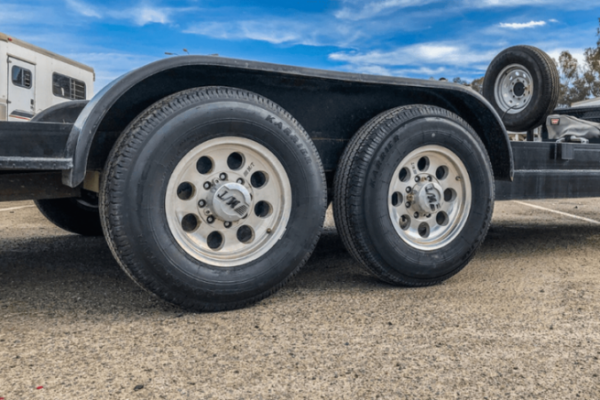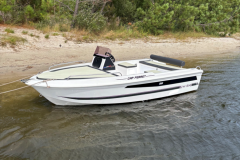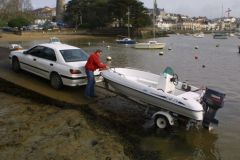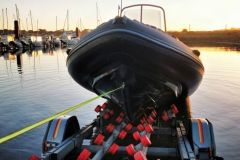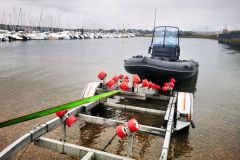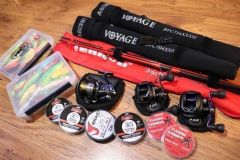When we think of trailers, we think of winches, rollers, drawbars and even bearings, but rarely of tires. Yet it's the tires that support the entire structure, and are the first to suffer from shocks, partial immersion and exposure to sun and salt. Here's what you really need to check, dismantle, grease or replace, to avoid unpleasant surprises.
Mounting a tire on a rim is no easy task
It's possible to change a trailer tire yourself, but there are a few rules to follow. Unlike car tires, trailer tires are often stiffer, and may require sturdy tire levers to mount.
The classic method involves removing the worn tire with levers, lubricating the bead of the new tire, then sliding it onto the rim. Once in place, a compressor is used to re-pressurize the tire, not forgetting to check the valve for leaks.
But be careful, when reassembling the wheel on the trailer, the bolts must be tightened crosswise with a torque wrench, otherwise the rim will deform or loosen progressively. It's advisable to check the tightening torque regularly, especially after a first trip with new tires.
And if you don't have the right equipment, it's best to call in a professional. A tire mounting if not carried out correctly, the rim may burst or come loose, with all the consequences that can be imagined for the road (or at least for your boat).
Visible signs of wear on the flanks
A trailer tire may look good if the tread is intact. However, it's often on the sidewalls that the damage begins. Cracks caused by UV rays, stagnant water or chronic under-inflation can precede a sudden rupture.
A trailer stored without stanchions will see its tires deform over time. This can lead to flat spots and vibrations when driving. The solution? Store the trailer without the tires on the ground (stanchions), or lift the trailer and turn the wheels regularly, once a month in the off-season.
Check pressure, but not with a wet finger
Each tire reference has a specific inflation pressure, generally between 2.3 and 3 kg depending on the model. This pressure must be scrupulously respected, especially before a long journey. An under-inflated tire heats up more, consumes more fuel and wears out prematurely.
The recommended pressure is often indicated on the tire sidewall, or on a label stuck to the axle. To avoid mistakes, it's best to use an accurate pressure gauge. A quick glance at the tire, or a manual pressure reading, will not help.
Why valves are the forgotten ones
Even when properly mounted and inflated, a tire can lose pressure because of a simple leaky valve. These little rubber parts harden over the years, especially when they're regularly immersed in water.
When launching, the pressure exerted by the water can disrupt the valve seal. Replacement every four years is recommended. It's a simple, inexpensive operation, but one that prevents many breakdowns.
Partial immersion: how far can you go?
On a slipway, it's tempting to soak the trailer to simplify launching. But there's a clear limit: the wheels must only be immersed up to the crown of the tire. Beyond this level, the rim, bearings and drum are exposed to salt water. The result: accelerated corrosion, seized brakes, worn bearings.
In all cases, a thorough rinse is mandatory after each approach with the trailer and salt water.
Replace or change the complete wheel?
At a certain point, changing just the tire is no longer enough. If the rim is oxidized, deformed or rusted to the point of altering the balance of rotation, it's better to replace the whole assembly.
On the market, you can find complete wheels ready to mount, sometimes at more competitive prices than workshop assembly. A wise choice if you want to leave with a set of wheels in good condition for the road.

 /
/ 